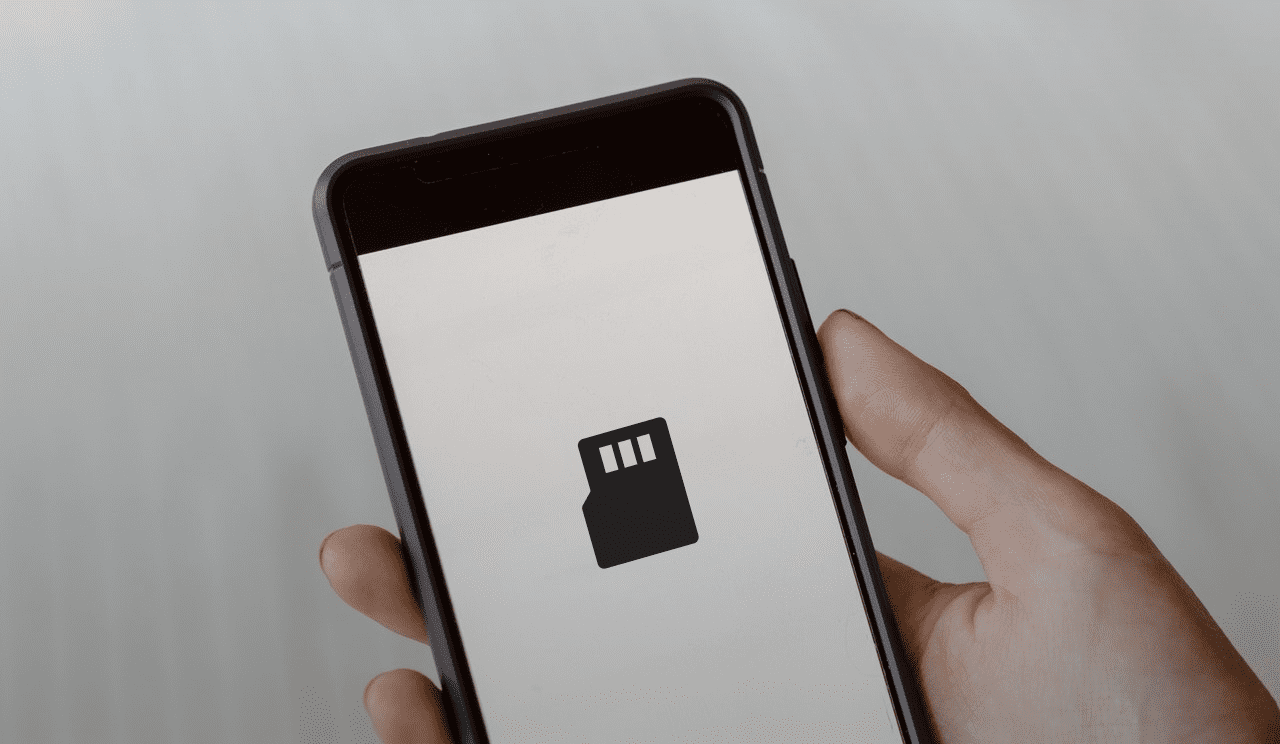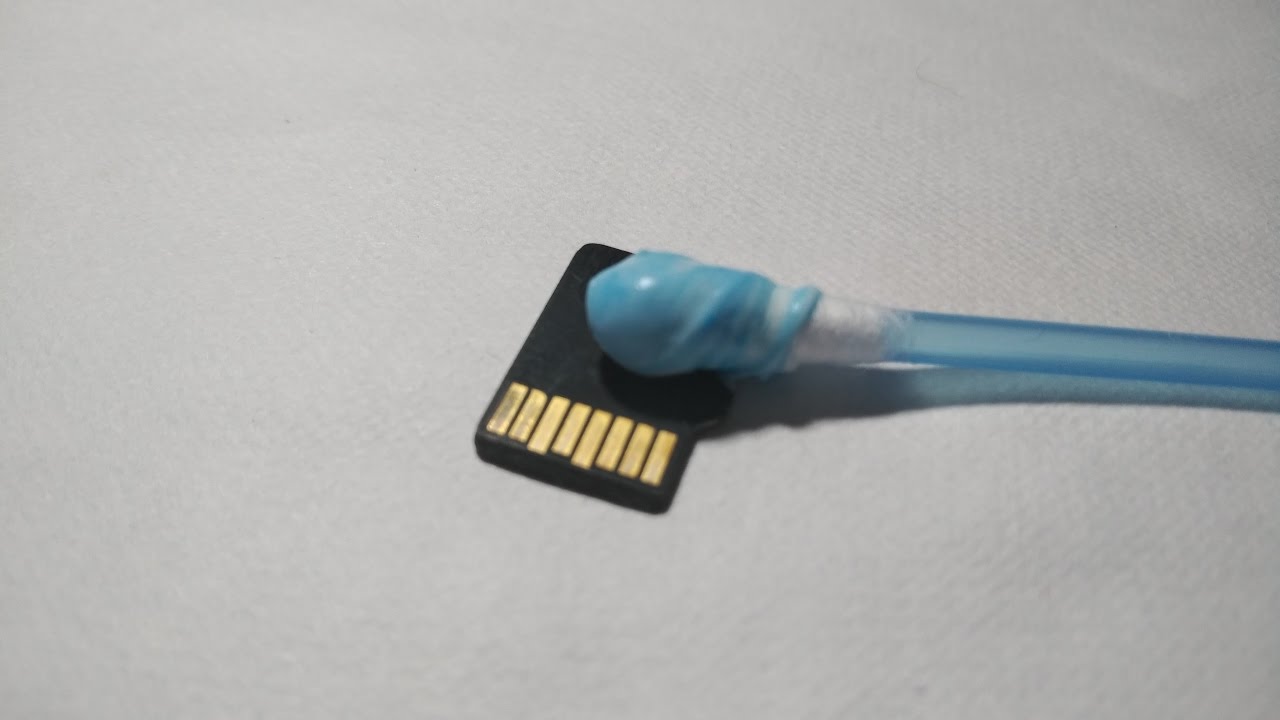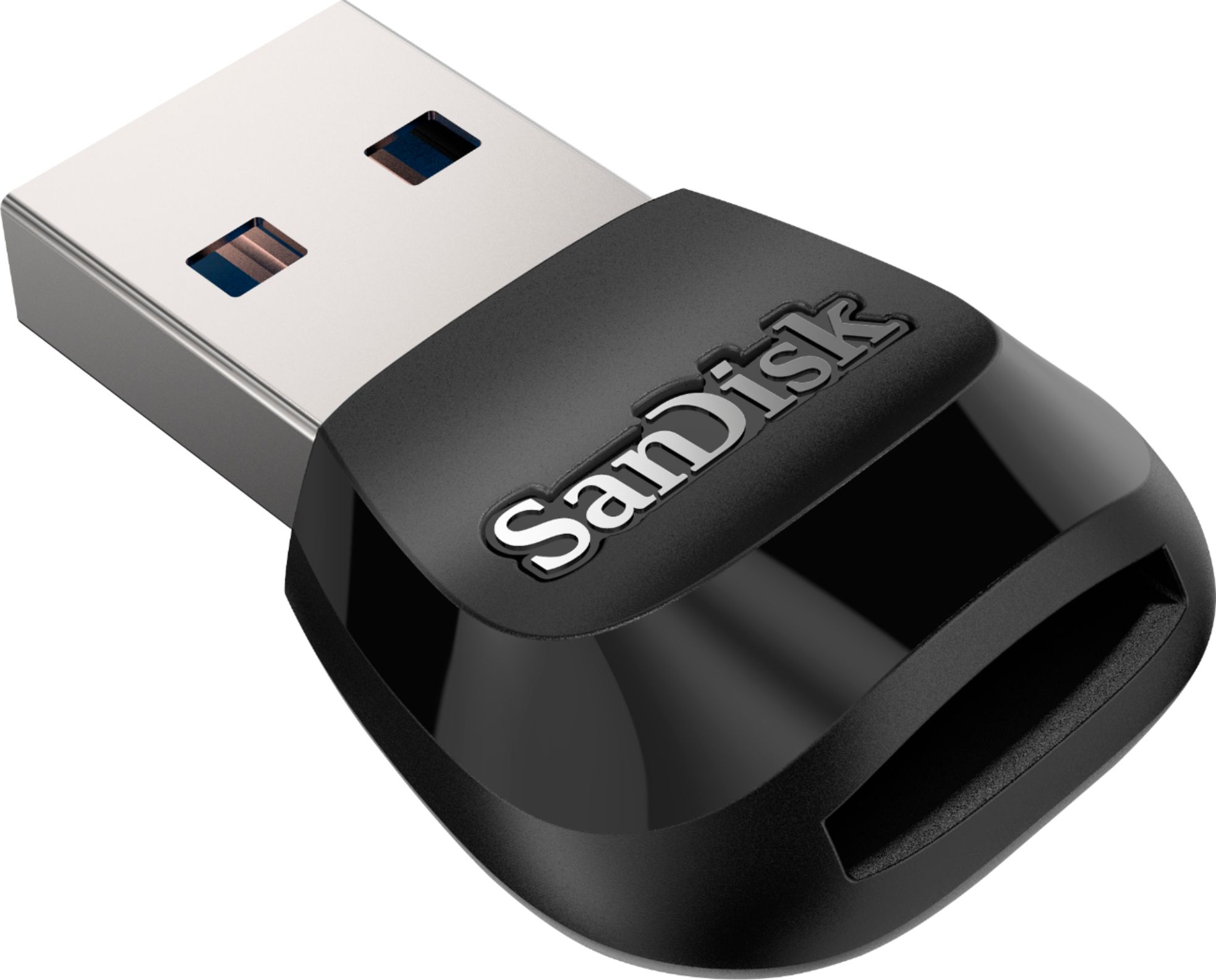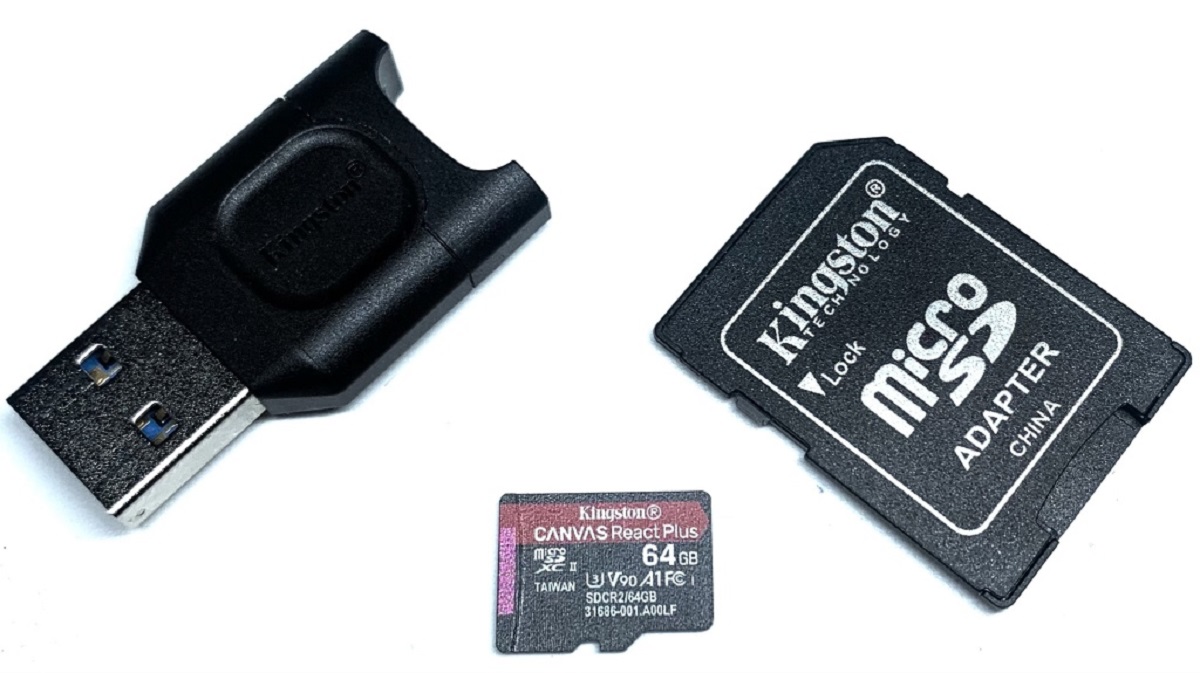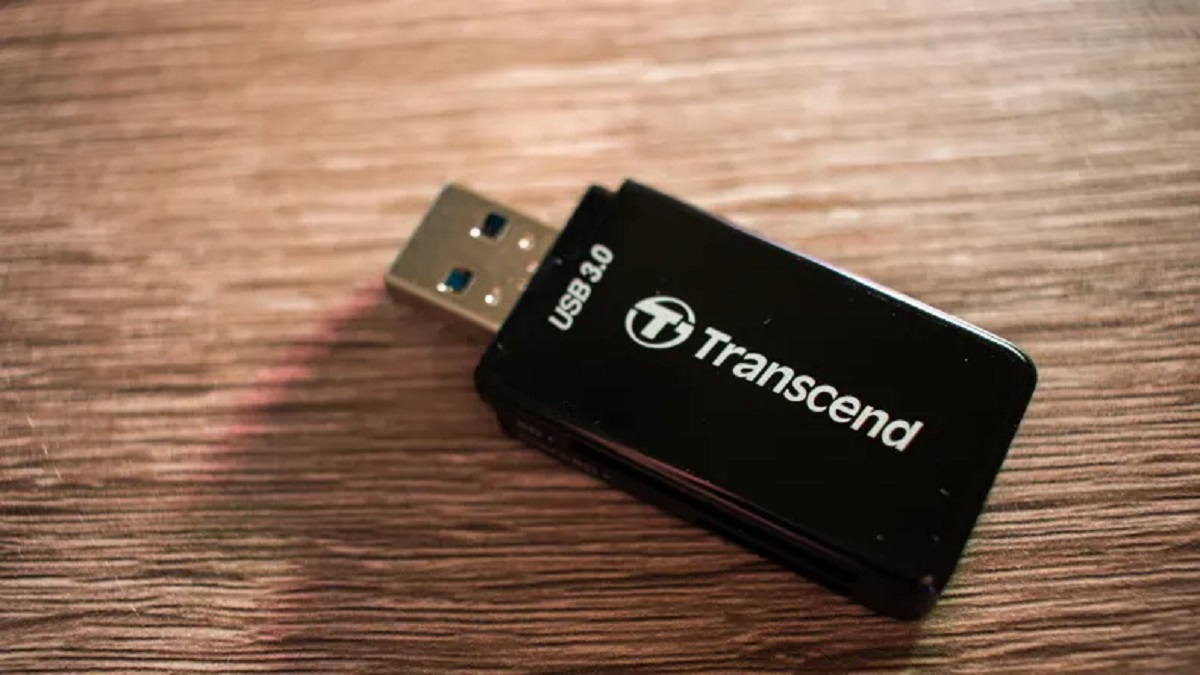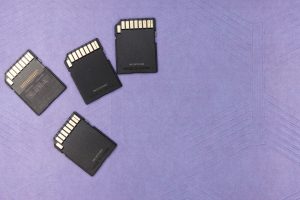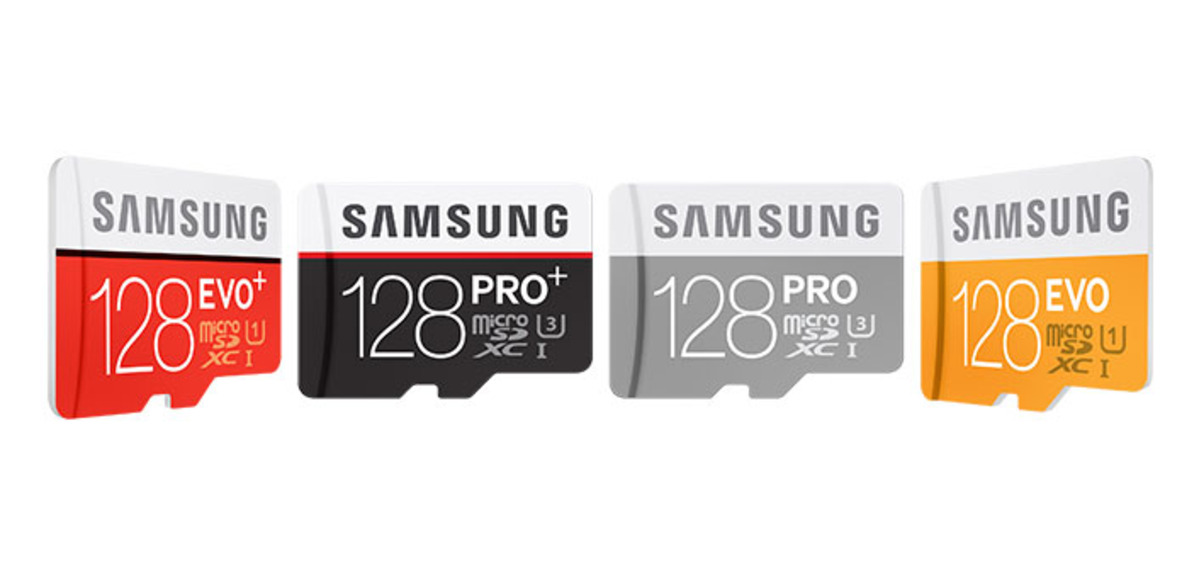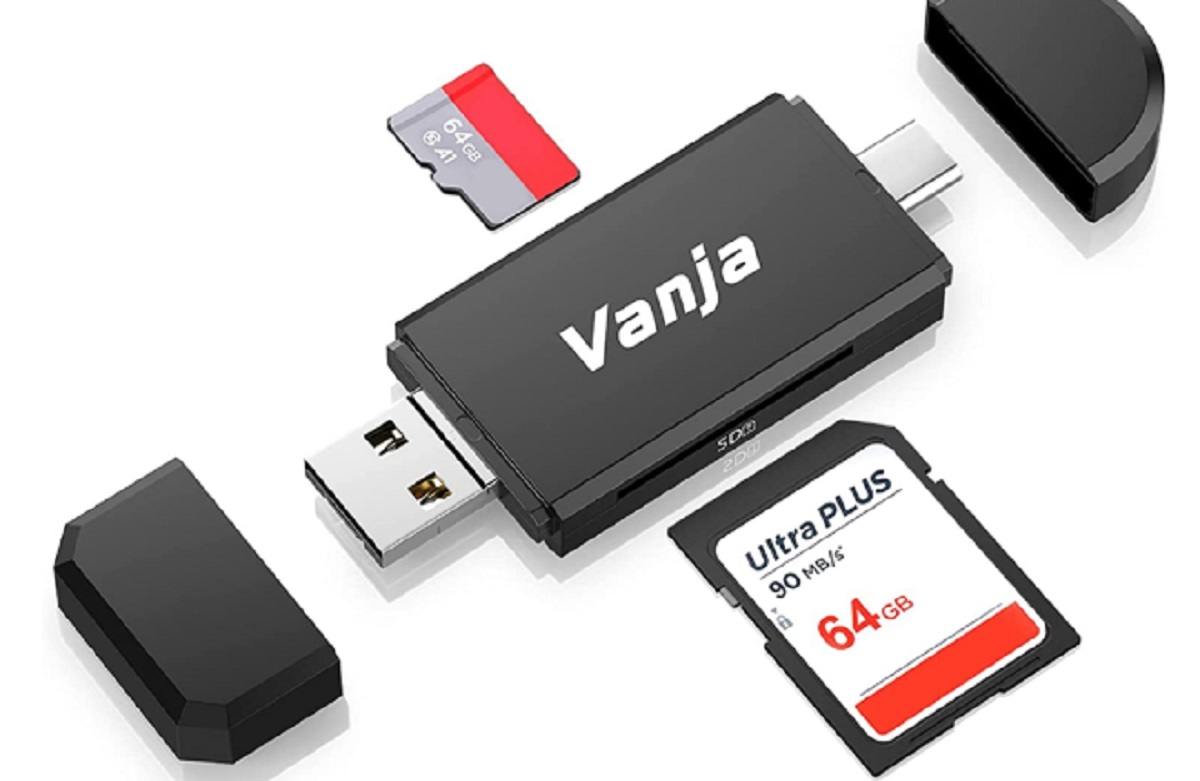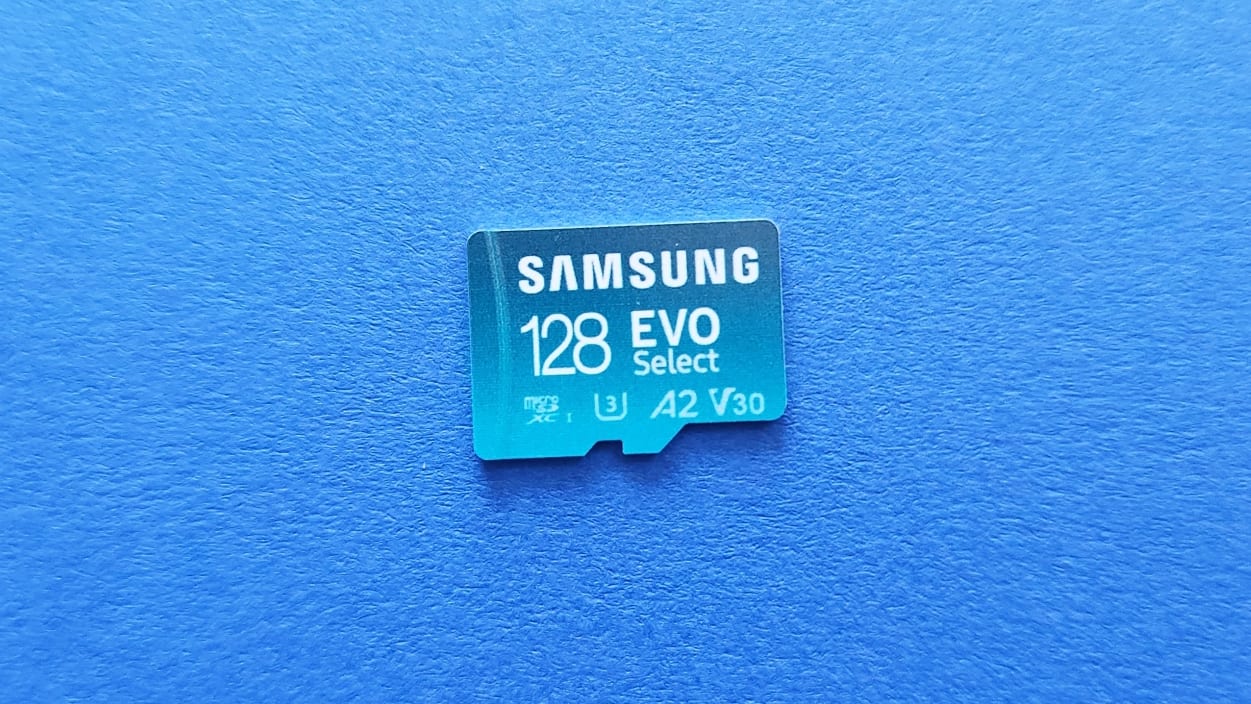Introduction
Having a smartphone that supports expandable memory through an SD card can be incredibly convenient. It allows you to store a vast amount of photos, videos, and files without taking up precious internal storage. However, there may come a time when you encounter an issue with your phone not reading the SD card. This can be frustrating, especially if you have important data stored on the card.
There can be several reasons why your phone is not reading your SD card. In this article, we will explore some of the common causes behind this problem and provide troubleshooting steps to help you resolve the issue.
Before we dive into the potential reasons, it is worth noting that the specific steps and solutions mentioned in this article may vary depending on the make and model of your smartphone. However, the underlying principles and concepts will apply to most devices.
So, if you find yourself in a situation where your phone is not recognizing your SD card, read on to learn about the possible causes and how to fix them.
Possible Reasons for SD Card Not Being Read
When your phone fails to read the SD card, it can be due to a variety of factors. Understanding these potential reasons can help you narrow down the cause and take appropriate steps to fix the issue. Here are some common reasons why your SD card might not be recognized by your smartphone:
1. Dirty or Damaged SD Card: If the gold contacts on your SD card are dirty or damaged, it can prevent proper communication with the card reader. Dust, debris, or fingerprints on the metal contacts can interfere with the connection. Similarly, if the card itself is physically damaged, such as a bent or broken chip, it may not be readable by your phone.
2. Faulty SD Card Reader: The SD card reader in your smartphone can malfunction, causing it to fail to detect the SD card. This can be due to a loose connection, damaged pins, or a component failure. If you have tried using different SD cards and none of them are being recognized, the issue might lie with the card reader.
3. Incompatible SD Card Format: SD cards come in different formats, such as FAT32, exFAT, or NTFS. If your SD card is formatted in a format that is incompatible with your phone, it may not be readable. Some older devices may only support the FAT32 format, while newer ones can handle exFAT or NTFS. Check your phone’s specifications to ensure compatibility with the SD card format.
4. SD Card Not Properly Inserted: It might sound obvious, but sometimes the SD card is not fully inserted into the card slot. A partially inserted SD card will not make a proper connection with the pins in the card slot, resulting in it not being recognized by the phone. Make sure to push the card in until it clicks into place.
5. Software/Hardware Issues in Smartphone: Occasionally, software or hardware problems within your smartphone can interfere with the SD card detection. This can be caused by outdated or buggy software, conflicting apps, or hardware malfunctions. Updating your phone’s software, performing a factory reset or seeking professional assistance are possible solutions in these cases.
By understanding these potential causes, you can now move on to troubleshooting steps to resolve the issue of your phone not reading your SD card.
Dirty or Damaged SD Card
One of the common reasons why your phone may fail to read your SD card is if the card or its gold contacts are dirty or damaged. Dust, debris, or fingerprints on the metal contacts can interfere with the proper connection between the SD card and the card reader in your smartphone. Similarly, physical damage to the SD card, such as a bent or broken chip, can prevent it from being recognized.
To resolve this issue, follow these steps:
1. Remove the SD card: Power off your smartphone and remove the SD card from the card slot. Handle it carefully to avoid further damage.
2. Clean the SD card: Inspect the gold contacts on the back of the SD card. If you notice any dirt or residue, gently wipe it away using a clean microfiber cloth. Avoid using any liquid or abrasive materials that could scratch or damage the contacts.
3. Clean the card reader: Using a compressed air can or a soft brush, remove any dust or debris from the card slot of your smartphone. Be gentle and avoid inserting anything into the slot that could cause damage.
4. Inspect for physical damage: Examine the SD card for any signs of physical damage, such as a bent or broken chip. If you notice any, unfortunately, it may be irreparable and you will need to replace the SD card.
5. Reinsert the SD card: Once you have cleaned the SD card and the card slot, carefully reinsert the SD card into the slot until it clicks into place. Ensure that it is properly seated and has made a secure connection.
After following these steps, power on your smartphone and check if the SD card is now being recognized. If the issue persists, continue troubleshooting the other possible reasons for your phone not reading the SD card.
Faulty SD Card Reader
If you have ruled out a dirty or damaged SD card as the cause of your phone not reading the SD card, the next possibility to consider is a faulty SD card reader in your smartphone. The SD card reader may experience issues such as a loose connection, damaged pins, or an internal component failure, resulting in the failure to detect the SD card.
To address this issue, you can try the following steps:
1. Restart your smartphone: Sometimes, a simple restart can resolve temporary glitches in the SD card reader. Power off your phone, wait a few seconds, and then turn it back on. Check if the SD card is now being recognized.
2. Inspect the card reader: Examine the card slot of your smartphone for any visible physical damage or foreign objects that may be obstructing the connection. If you notice anything unusual, such as bent pins, you may need to take your phone to a professional for repair.
3. Try a different SD card: Test a different SD card in your smartphone’s card slot to determine if the issue lies with the SD card reader or the specific SD card. If a different card works fine, it indicates that the original SD card reader may be faulty.
4. Apply gentle pressure: This step should only be attempted if you are comfortable doing so. With the SD card inserted, apply gentle pressure to the card slot in different directions. Sometimes, a loose connection can be fixed by securing the internal components.
5. Seek professional assistance: If the above steps do not resolve the issue, it is recommended to take your smartphone to an authorized service center or contact the manufacturer’s support team. They will be able to diagnose and address any hardware issues with the SD card reader.
By following these steps, you can determine if a faulty SD card reader is the reason why your phone is not reading the SD card. If necessary, consult with professionals to get a proper diagnosis and have the issue resolved.
Incompatible SD Card Format
Another possible reason why your phone may not be reading your SD card is if the card is formatted in a format that is incompatible with your smartphone. Different devices support different file system formats, such as FAT32, exFAT, or NTFS. If your SD card is formatted in a format that your phone doesn’t support, it won’t be able to read the card.
To resolve this issue, follow these steps:
1. Check your phone’s specifications: Consult your smartphone’s user manual or visit the manufacturer’s website to find out the supported formats for SD cards. Look for information about the maximum capacity and the file system formats that your phone can recognize.
2. Backup your data: Before proceeding with any formatting, it is essential to back up any important data on the SD card. Formatting the card will erase all data stored on it, so ensure you’ve made a backup to prevent loss of files.
3. Format the SD card on your computer: If the SD card is currently formatted in an incompatible format, you can connect it to your computer and format it to a compatible file system. Insert the SD card into a card reader, connect it to your computer, and open the file explorer. Right-click on the SD card, select “Format,” and choose the appropriate file system format (FAT32 recommended for maximum compatibility with devices).
4. Format the SD card on your smartphone: Alternatively, if your smartphone supports it, you can format the SD card directly on the device. Go to the settings menu, find the storage or SD card section, and look for an option to format the SD card. Follow the on-screen instructions to complete the formatting process.
5. Reinsert the SD card: Once you have formatted the SD card, reinsert it into your smartphone’s card slot and check if it is now being recognized. Ensure that it is correctly inserted and securely connected.
By following these steps, you can ensure that your SD card is formatted in a compatible format for your smartphone. This will increase the chances of your phone being able to read the card and access the data stored on it.
SD Card Not Properly Inserted
It may sound obvious, but sometimes the reason why your phone is not reading the SD card is simply because it is not properly inserted into the card slot. A partially inserted SD card will not make a secure connection with the pins in the card slot, preventing the phone from recognizing it.
To address this issue, follow these steps:
1. Power off your smartphone: Before working with the SD card, it is essential to power off your device to avoid any potential damage.
2. Locate the SD card slot: Consult your smartphone’s user manual or do a quick online search to find the exact location of the SD card slot. It is often located on the side of the device or beneath the battery cover.
3. Remove the SD card: If you have already inserted the SD card, gently remove it from the card slot by pushing it in until you hear a click and it pops out slightly. Be careful not to force it out or use excessive pressure.
4. Clean the SD card and slot: Check the SD card for any dust or debris, and gently wipe it clean using a soft, lint-free cloth. Take a moment to inspect the card slot as well and remove any visible dirt or obstruction with a clean, dry cloth or compressed air.
5. Reinsert the SD card: Align the SD card with the card slot and slide it in completely until it clicks into place. Ensure that the card is fully seated in the slot and flush with the device’s frame.
6. Power on your smartphone: Once the SD card is inserted correctly, power on your smartphone and check if it now recognizes the card. Navigate to your device’s storage settings to confirm that the SD card is being detected.
By ensuring that the SD card is properly inserted into the card slot, you can eliminate this simple issue as a potential cause for your phone not reading the SD card. If the problem persists, continue troubleshooting other possible reasons.
Software/Hardware Issues in Smartphone
If your phone is still not reading the SD card after trying the previous troubleshooting steps, it’s possible that the issue lies within the software or hardware of your smartphone. Software glitches, outdated firmware, conflicting apps, or hardware malfunctions can all contribute to a failure to detect the SD card. Here are some steps you can take to address potential software or hardware issues:
1. Restart your smartphone: A simple restart can often resolve temporary software glitches that may be preventing the SD card from being recognized. Power off your device, wait a few seconds, then turn it back on and check if the SD card is now detected.
2. Update your software/firmware: Outdated software or firmware can cause compatibility issues with the SD card. Check for available system updates for your smartphone and install them if necessary. Updating the software can help resolve any bugs or compatibility issues that may be affecting the SD card reader.
3. Perform a factory reset: If the issue persists after updating your software, performing a factory reset may help. This will erase all data on your phone, so it is crucial to back up your files first. Go to your smartphone’s settings and look for the option to perform a factory reset. Follow the on-screen instructions to complete the process, and then check if the SD card is detected.
4. Check for conflicting apps: Certain apps or settings on your smartphone may conflict with the SD card reader. Try removing recently installed apps or disabling certain settings that may be causing the issue. You can also try booting your phone in safe mode to see if the SD card is recognized without any third-party apps running.
5. Seek professional assistance: If none of the above steps resolve the problem, it is recommended to contact the manufacturer’s support or take your smartphone to an authorized service center. They will be able to diagnose and address any hardware malfunctions with the SD card reader.
By addressing potential software or hardware issues, you can determine if they are responsible for your phone not reading the SD card. If necessary, the assistance of professionals can help identify and resolve any underlying problems.
Troubleshooting Steps to Fix the Problem
When your phone is not reading your SD card, it can be frustrating, but there are several troubleshooting steps you can take to fix the issue. Here are some recommended steps to help you resolve the problem:
1. Clean the SD card and reader: Ensure that the gold contacts on the SD card are clean and free from any dirt or debris. Use a clean microfiber cloth to gently wipe the contacts. Also, clean the card reader in your smartphone using compressed air or a soft brush to remove any dust or debris.
2. Check for physical damage: Inspect the SD card for any signs of physical damage, such as a bent or broken chip. If there is physical damage, unfortunately, the card may be irreparable, and you will need to replace it.
3. Format the SD card: If the SD card is not formatted or is formatted in an incompatible format, it may not be recognized by your phone. Format the SD card either on your computer or on your smartphone using the appropriate file system format (FAT32 is recommended for maximum compatibility).
4. Reinsert the SD card properly: Remove the SD card from your phone and reinsert it into the card slot, ensuring that it is fully seated and securely connected. Sometimes, an improperly inserted SD card can cause detection issues.
5. Restart your smartphone: Restarting your smartphone can help resolve temporary software glitches that may be affecting the SD card reader. Power off your device, wait a few seconds, and then turn it back on.
6. Update the software/firmware: Ensure that your smartphone’s software and firmware are up to date. Check for available updates and install them if necessary. Updating the software can address any bugs or compatibility issues that may be impacting the SD card reader.
7. Test the SD card on another device: If possible, try inserting the SD card into another device, such as a computer or another smartphone, to determine if the issue lies with the SD card itself or with your phone’s card reader.
These troubleshooting steps should help you identify and resolve the issue of your phone not reading the SD card. If none of these steps solve the problem, it may be necessary to seek professional assistance or consider replacing the SD card or the device itself.
Clean the SD Card and Reader
One of the common reasons for your phone not reading the SD card is debris or dirt on either the SD card or the card reader. Dust, fingerprints, or other particles can hinder the proper connection between the SD card’s metal contacts and the pins in the card reader. Therefore, it is crucial to clean both the SD card and the card reader to ensure a clear and unobstructed connection.
You can follow these steps to clean the SD card and the card reader:
1. Remove the SD card: Turn off your smartphone and carefully remove the SD card from the card slot. Take care to avoid any damage to the card or the device.
2. Inspect the SD card: Examine the gold contacts on the back of the SD card. If you notice any dirt, fingerprints, or residue, you should clean them to improve the connectivity.
3. Clean the SD card: Use a microfiber cloth or a soft, lint-free cloth to gently wipe the gold contacts on the back of the SD card. Avoid using any liquid or abrasive materials that could scratch or damage the contacts. Be thorough in cleaning both sides of the card.
4. Inspect the card reader: Visually inspect the card reader in your smartphone. Look for any visible dust, debris, or obstruction that may be preventing a proper connection between the SD card and the pins in the card reader.
5. Clean the card reader: If you observe any dust or debris in the card reader, use a can of compressed air or a soft brush to carefully remove them. Ensure that the device is powered off and the appropriate precautions are taken to avoid any damage.
6. Reinsert the SD card: Once the SD card and card reader are clean, reinsert the SD card back into the card slot. Make sure it is properly aligned and fully inserted until you hear a click, indicating that it is securely in place.
7. Power on your smartphone: Turn on your smartphone and check if the SD card is now being recognized. Navigate to your device’s storage settings to ensure that the SD card is detected and accessible.
By cleaning both the SD card and the card reader, you eliminate potential obstructions that could prevent proper communication between the two. This step is a simple yet essential troubleshooting measure that can often resolve the issue of your phone not reading the SD card.
Check for Physical Damage
If your phone is not reading the SD card, it’s essential to check for any signs of physical damage on the SD card itself. Physical damage, such as a bent or broken chip, can prevent the card from being properly recognized by your smartphone. By inspecting the SD card for any visible damage, you can determine if this is the cause of the issue.
Follow these steps to check for physical damage on the SD card:
1. Remove the SD card: Power off your smartphone and carefully remove the SD card from the card slot. Handle it with care to avoid any further damage.
2. Inspect the SD card visually: Carefully examine the SD card for any visible signs of physical damage. Look for cracks, scratches, or bent or broken chips on the card’s surface. Pay close attention to the metal contacts on the back of the card as well.
3. Check the edges and corners: Inspect the edges and corners of the SD card for any signs of damage. Look for chipped or broken areas that could indicate physical trauma to the card.
4. Check the metal contacts: Gently examine the gold contacts on the back of the SD card. Ensure that they are clean, properly aligned, and free from any damage or corrosion.
5. Try a different card reader: If you have access to another card reader, try inserting the SD card into it to see if it is recognized. This step will help determine if the issue lies with the card itself or the card reader in your smartphone.
6. Test the SD card on another device: If possible, try inserting the SD card into another device, such as a computer or another smartphone, to see if it is detected. If it works fine in another device, it suggests that the card reader in your smartphone may be the problem.
By carefully inspecting the SD card for physical damage, you can identify any visible issues that may be causing your phone not to read the card. If you find signs of significant physical damage, unfortunately, the card may be irreparable, and you will need to replace it with a new one.
Format the SD Card
If your phone is not reading the SD card, one potential solution is to format the card. Formatting the SD card can resolve issues related to incompatible file system formats or corrupted data that may be preventing your smartphone from recognizing the card. However, it is important to note that formatting the SD card will erase all data stored on it, so it is crucial to back up any important files before proceeding.
Follow these steps to format the SD card:
1. Backup your data: Connect the SD card to a computer using a card reader and copy any important files to a safe location. This step ensures that your data is protected and can be restored after formatting.
2. Insert the SD card: Once your data is backed up, insert the SD card back into your smartphone’s card slot.
3. Access the settings menu: Go to the settings menu on your smartphone. Look for the storage or SD card section. The exact location of this setting may vary depending on your device.
4. Find the SD card: In the storage or SD card section, locate the option that lists the SD card. It may be labeled as “SD card,” “External storage,” or something similar.
5. Select the format option: Within the SD card settings, you should find the option to format the card. Tap on this option to proceed.
6. Confirm the formatting: A warning message will typically appear, informing you that formatting will erase all data on the card. Read the warning message carefully, and if you are certain about erasing the data, confirm the formatting process.
7. Wait for the formatting to complete: The formatting process may take a few moments. Allow your smartphone to complete the formatting process without interruption.
8. Restart your smartphone: After formatting is complete, restart your smartphone to ensure that the changes take effect.
9. Restore your data: Once your phone has restarted, you can transfer your backed-up files back onto the SD card using the card reader and computer.
By formatting the SD card, you can eliminate any potential issues with incompatible file system formats or corrupted data. Just remember to create a backup of your files before formatting to prevent any data loss.
Reinsert the SD Card Properly
If your phone is not reading the SD card, it is possible that the card was not inserted correctly or has become loose over time. A partially inserted or improperly seated SD card can prevent your phone from recognizing it. Therefore, it is important to ensure that the SD card is reinserted properly to establish a secure connection with the card slot.
Here are the steps to reinsert the SD card properly:
1. Power off your smartphone: Before attempting to reinsert the SD card, it is essential to power off your device to avoid any potential damage or data corruption.
2. Locate the SD card slot: Consult your smartphone’s user manual or do a quick online search to identify the location of the SD card slot. Typically, it is located on the side of the device or beneath the battery cover.
3. Remove the SD card: Gently push the SD card into the slot until you hear a click and feel resistance. Then, the card will pop out slightly, allowing you to remove it.
4. Inspect the SD card: Take a moment to inspect the SD card for any signs of damage, such as bent pins or cracks. If you notice any damage, unfortunately, the card may need to be replaced.
5. Reinsert the SD card: Align the SD card’s gold contacts with the pins in the card slot. Carefully insert the SD card into the slot, ensuring that it is properly seated and flush with the device’s frame.
6. Test the SD card: After inserting the SD card, power on your smartphone and check if it recognizes the card. Navigate to the storage settings on your device to confirm that the SD card is detected.
By reinserting the SD card properly, you can establish a secure connection between the card and the device. Make sure to follow these steps carefully to ensure that the SD card is correctly inserted, which can resolve the issue of your phone not reading the SD card.
Restart Your Smartphone
If your phone is not reading the SD card, a simple yet effective troubleshooting step is to restart your smartphone. Restarting your device can help resolve temporary software glitches or conflicts that may be affecting the SD card reader. It allows the operating system to refresh and start afresh, potentially resolving any issues that were preventing the detection of the SD card.
Follow these steps to restart your smartphone:
1. Save your work and close apps: Make sure to save any ongoing work and close all running apps on your smartphone. This ensures that no important data is lost during the restart process.
2. Power off your device: Locate the power button on your smartphone and press and hold it until the power options appear on the screen. Then, select the option to power off your device.
3. Wait a few seconds: After powering off your device, wait for a few seconds to allow it to completely shut down. This brief pause allows the device’s components to reset, which can help resolve any temporary issues.
4. Power on your device: Press and hold the power button again until the device vibrates or the manufacturer’s logo appears on the screen. This indicates that your smartphone is booting up.
5. Check for SD card recognition: Once your smartphone has restarted, check if the SD card is now being recognized. Navigate to the storage or SD card settings on your device to verify that the SD card is detected and accessible.
By restarting your smartphone, you give it a fresh start and allow the operating system to resolve any temporary glitches or conflicts that may have been preventing the SD card from being recognized. This simple step can often resolve the issue of your phone not reading the SD card.
Update Software/Firmware
If your phone is not reading the SD card, it could be due to outdated or buggy software or firmware. Software updates often include bug fixes, compatibility improvements, and enhancements that can address issues with the SD card reader. Updating your device’s software or firmware to the latest version can help resolve such problems and ensure better compatibility with the SD card.
Follow these steps to update your smartphone’s software or firmware:
1. Check for software updates: Go to the settings menu on your smartphone. Look for the “Software Update” or “System Update” option. The location of this option may vary depending on your device and the operating system it runs on.
2. Check for firmware updates: If your device has a separate firmware update option, look for it in the same settings menu as the software update option.
3. Initiate the update: Tap on the “Software Update” or “System Update” option to check for any available updates. If updates are available, follow the on-screen prompts to download and install them. For firmware updates, follow the specific instructions provided by the manufacturer or carrier.
4. Connect to a stable Wi-Fi network: It is recommended to connect your device to a stable Wi-Fi network before initiating the update. This ensures a fast and reliable download and minimizes the chance of interruptions.
5. Restart your smartphone: After the update is complete, it is a good practice to restart your device. This helps ensure that the changes take effect and the system is fully updated.
6. Check SD card detection: Once your smartphone has restarted, check if the SD card is now being recognized. Navigate to the storage or SD card settings to confirm that the SD card is properly detected.
Updating your device’s software or firmware can often resolve compatibility issues and improve the performance of the SD card reader. It is recommended to regularly check for updates to ensure your device is running the latest software version.
Test the SD Card on Another Device
If your phone is not reading the SD card, it’s essential to determine whether the issue lies with the SD card itself or with the card reader in your smartphone. One way to troubleshoot this is by testing the SD card on another device. By inserting the SD card into another compatible device, such as a computer or another smartphone, you can assess if the card is functioning correctly and being recognized.
Follow these steps to test the SD card on another device:
1. Power off both devices: Power off your smartphone as well as the device you will be testing the SD card on. This ensures a safe and smooth testing process.
2. Remove the SD card: Carefully remove the SD card from your smartphone’s card slot.
3. Insert the SD card into another device: Locate the SD card slot on the other device and insert the SD card into it. Make sure the card is inserted correctly and securely.
4. Power on the other device: Power on the device that you inserted the SD card into. Allow it to boot up fully and reach the home screen or desktop.
5. Check for SD card detection: Once the other device has started up, check if the SD card is being recognized. Navigate to the storage settings or file explorer on the device to see if the SD card is detected and accessible.
6. Test file access: Open some files or media stored on the SD card to ensure they can be accessed without any issues. This step confirms that the card is working properly.
7. Remove the SD card: After testing, power off the other device and carefully remove the SD card from its slot.
By testing the SD card on another device, you can determine if the issue is related to the SD card itself or the card reader in your smartphone. If the SD card works fine on another device, it suggests that the problem lies with your smartphone’s card reader, and further troubleshooting or assistance may be required.
Conclusion
Encountering a situation where your phone is not reading your SD card can be frustrating, but it does not necessarily mean that the card or your phone is permanently damaged. By understanding and troubleshooting the potential causes, you can often resolve the issue and regain access to your data stored on the SD card.
In this article, we discussed several possible reasons for your phone not reading the SD card, including a dirty or damaged card, a faulty card reader, an incompatible card format, improper insertion, and software/hardware issues. We also provided troubleshooting steps to help you address each of these possibilities.
Remember to clean both the SD card and the card reader to ensure a clear and unobstructed connection. Check for physical damage on the SD card and reinsert it properly into the card slot. Additionally, consider updating your phone’s software/firmware and testing the SD card on another device to identify the root cause of the issue.
It’s important to keep in mind that while these troubleshooting steps can often resolve the problem, there may be instances where professional assistance or card replacement becomes necessary. If you continue to experience difficulties with your SD card, contacting the manufacturer’s support or visiting an authorized service center can provide further guidance and remediation.
By following the recommended troubleshooting steps and taking the appropriate actions, you can increase the chances of resolving the issue of your phone not reading the SD card. Whether it involves cleaning, reinserting, formatting, updating, or testing, these steps empower you to troubleshoot and potentially overcome the problem, restoring functionality to your SD card and ensuring uninterrupted access to your important data.







